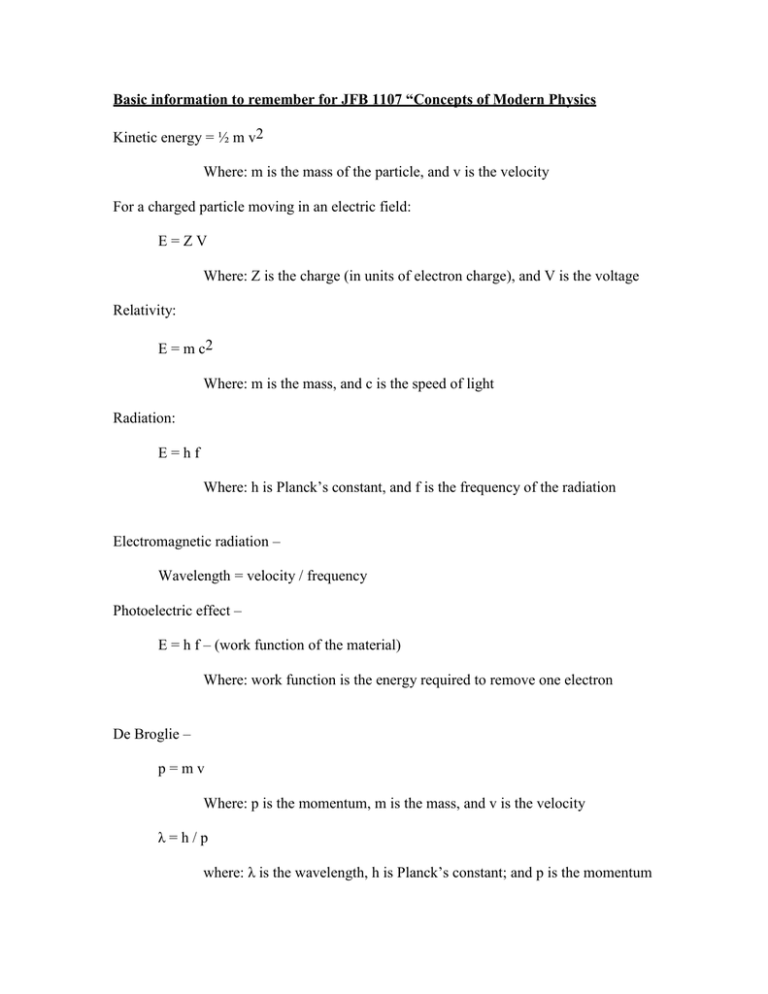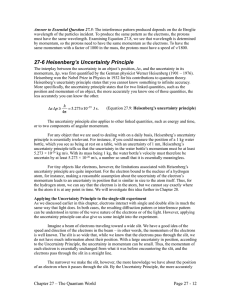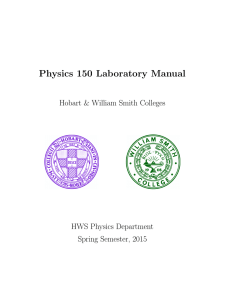Equation quick reference (Word document)
advertisement

Basic information to remember for JFB 1107 “Concepts of Modern Physics Kinetic energy = ½ m v2 Where: m is the mass of the particle, and v is the velocity For a charged particle moving in an electric field: E=ZV Where: Z is the charge (in units of electron charge), and V is the voltage Relativity: E = m c2 Where: m is the mass, and c is the speed of light Radiation: E=hf Where: h is Planck’s constant, and f is the frequency of the radiation Electromagnetic radiation – Wavelength = velocity / frequency Photoelectric effect – E = h f – (work function of the material) Where: work function is the energy required to remove one electron De Broglie – p=mv Where: p is the momentum, m is the mass, and v is the velocity λ=h/p where: λ is the wavelength, h is Planck’s constant; and p is the momentum Heisenberg’s Uncertainty Principle Δp Δx ~ h / 2 π Where: Δp is the momentum uncertainty, Δx is the position uncertainty Or: ΔE Δt ~ h / 2 π Where: ΔE is the energy uncertainty, Δt is the time uncertainty Binding energy – For a nucleus ZA X where X is the element symbol, A is the atomic mass, Z is the atomic number, N is the neutron number (=A – Z), the binding energy is: E B ( Z m H N mn ZA M ) c 2 where: mH is the mass of hydrogen (~ same as the mass of a proton), m n is the mass of a neutron, ZA M is the mass of the element ZA X Binding energy per nucleon – EB A EV E S EC where: EV is the volume energy = a1 A , E S is the surface energy = a 2 A 2 3 E C is the Coulomb energy = a3 Z (Z 1) A and: a1 , a 2 , a3 are all constants 4 3 Radioactive decay – N = N0 e – λ t Where: N is the number of nuclei that have not decayed after time t, N0 is the initial number of nuclei, λ is the decay constant, t is the time










